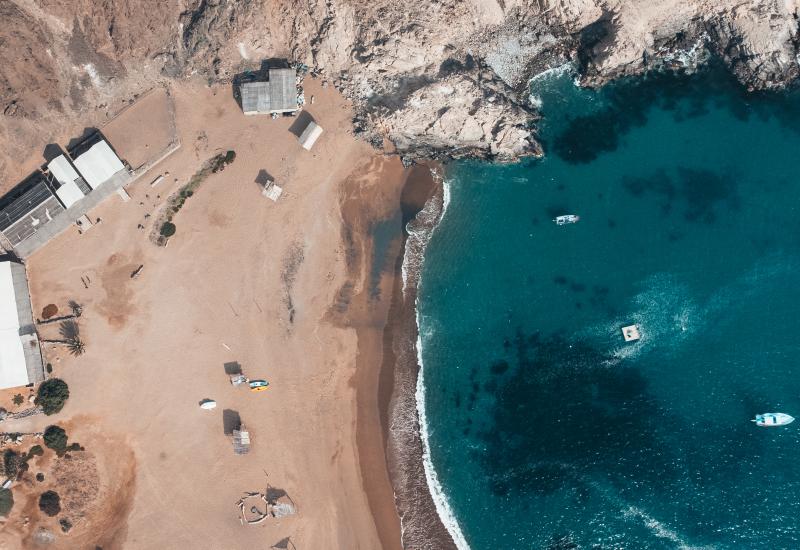Best Ice Diving Destinations in the World
It’s not just a change of scenery; it’s a change of mindset. The one word every polar diver tosses around is “explore.” The koan that you never step into the same river is true, sure, but it’s that much truer of the ice diving realm. Winter never carves the same frozen mountains twice. And the path to the floe edge shifts with the cloud cover. Those who venture to and under the ice see what no other diver will. Possibly ever.
Tobermory, Canada
Get past freeze-proof gear and under-ice protocol, and winter diving packs a trippy reality found nowhere else.
This past winter, Lake Huron, home to Fathom Five National Marine Park, never froze solid. Most polar-plunge seekers passed, unable to tote gear by sled or car across the lake.
Not underwater shooter Jerzy Kowalczuk. He’d been dreaming of ice diving the park’s famed 119-foot Sweepstakes schooner, sunk in 20 feet. Instead of putting in at Big Tub Harbor Lighthouse, a five-hour drive from Detroit, he called friends until he gained access to private cabins nearer the wreck.
Says Kowalczuk: “It was such a strange sight. Sun passing through ice creates a turquoise color, unique to winter diving. That day, sunbeams fed through the cracks — I was amazed.”
Find out more about wreck diving in Tobermory, Canada, and see a weekend itinerary.
Dive Now: By March, most of the lake has frozen over, allowing divers to walk or pull sleds of gear across the ice.
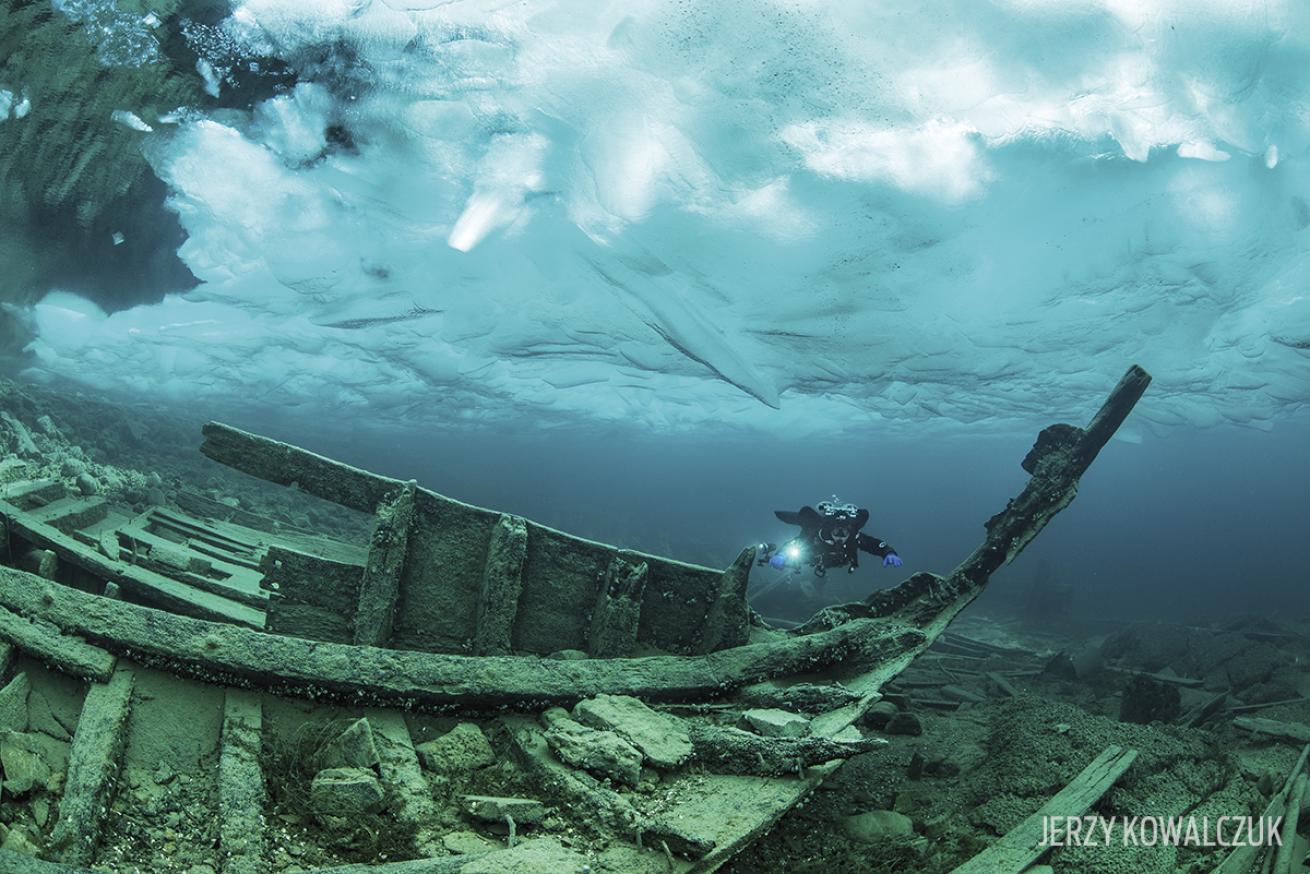
Jerzy KowalczukThe 59-foot John & Alex wreck is one of four steam tugboats clustered together in Little Tub Harbour, located at the Fathom Five National Marine Park in Tobermory, Canada. The depth is 15-20 feet and water temperatures during this dive was 33 degrees F.
Baffin Island, Canada
“No more than a half-dozen people each year have this experience,” says Jason Hillier, expedition leader for Arctic Kingdom, of ice diving Canada’s Baffin Island, known for polar bears, narwhals and grounded icebergs.
Unlike free-floating icebergs — extremely risky due to instability — those of Pond Inlet, where Hillier and his team venture, have over-wintered; that is, been packed into place by winter’s freezing hands.
“Where icebergs meet the ice is an intersection of moving water — this is where we dive open water,” says Hillier of the floe edge. There, entry is no different from hopping from the side of the pool, allowing those with no previous ice-diving experience to participate, graduating to more complicated environments, such as cracks in the ice ranging from 3- to 20-feet wide.
Dive Now: Arctic Kingdom treks to Baffin Island only in May, when the floe edge acts like the watering holes of the African grass plains — in this case, beckoning bowhead whales, ring seals and possibly belugas and narwhals.
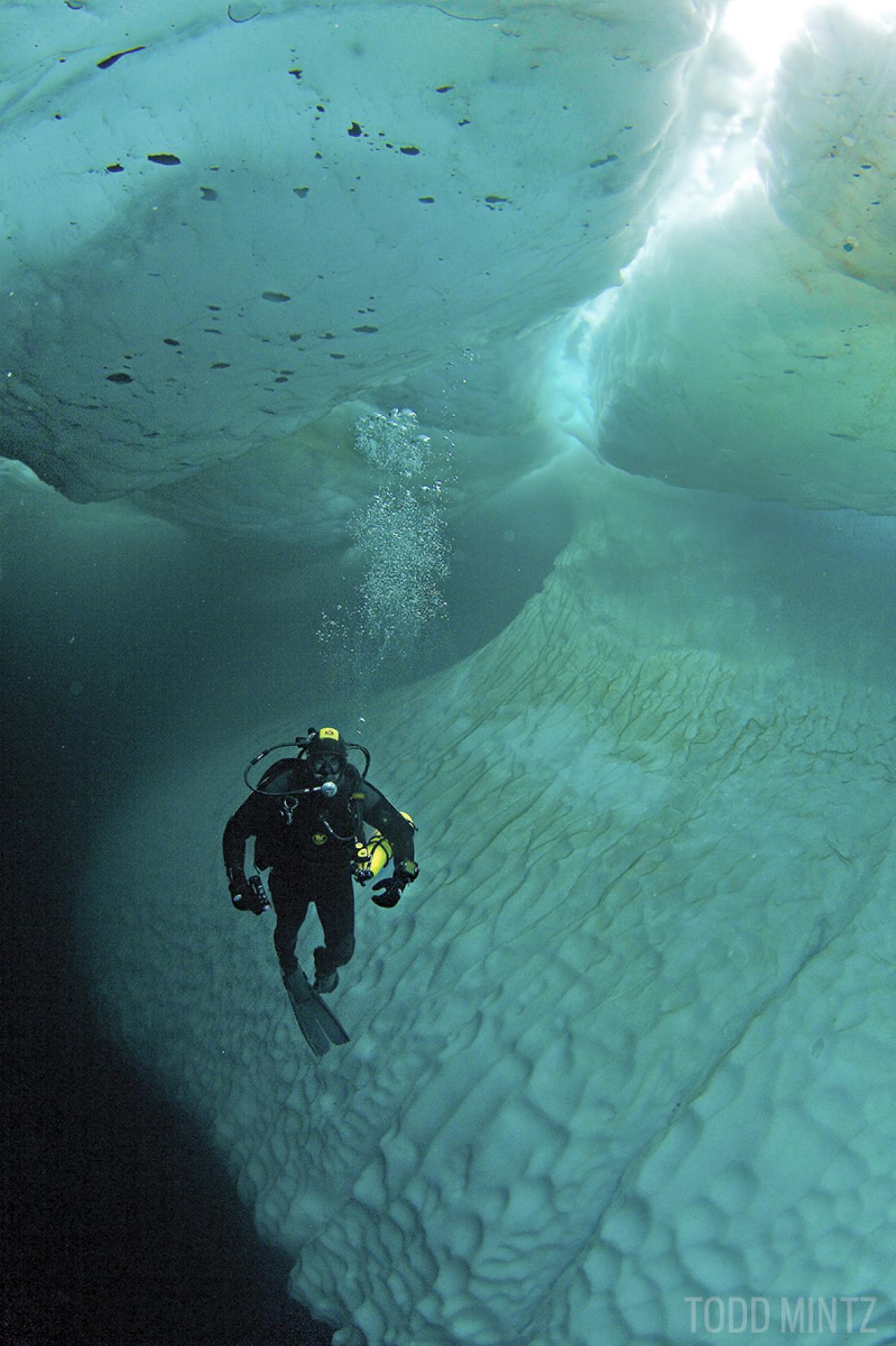
Todd MintzA diver floats next to an iceberg in the 28-degree waters of Baffin Island, Canada.
Newfoundland, Canada
Conception Bay off the Canadian island of Newfoundland is a sacred spot. There, divers in open-hull boats hunt the horizon for incoming icebergs, some 15,000 years old, that have ridden the Labrador Current more than 2,500 miles along Greenland’s southern tip and down Canada’s east coast.
Never is an iceberg more alive then in the final moments before its death.
“You hear it fizzing as it dissolves,” says Jill Heinerth, explorer-in-residence for the Royal Canadian Geographical Society. In June, she dove among dying bergs. There, no hole-cutting is necessary — rather, divers drop into open-ocean and approach from underwater, considered safer than the sea’s surface. But even this vantage point isn’t without hazards.The bergs break and shatter, triggering underwater explosions.
“Ice shards shoot to the surface because they’re so buoyant,” Heinerth says.
In such a dynamic environment, each crack and ice avalanche not only creates down-currents but also changes the iceberg’s buoyancy instantly, thanks to a sudden surges of freshwater. It’s one reason that divers, wearing helmets and dry-suits, require lift bags — to ensure escape from the ocean’s fickle grip, avoiding the same fate as the bergs.
Dive Now: Iceberg season lasts April through July.
St. Lawrence River, Canada
Reaching the harp seal pups born in late February in the St. Lawrence River once required chartering a helicopter or fishing boat from Îles-de-la-Madeleine, Quebec. Since 2014, polar operator Arctic Kingdom has run private expeditions to the Magdalen Islands, ice permitting — but you’ll still need to get creative to snag an up-close portrait.
“I would go under the ice and almost hide, positioning myself behind a chunk of ice — not that you can hide from a seal,” says underwater photographer Brian Skerry.
The babies, called whitecoats, have the second-fastest weaning in the animal kingdom. Two weeks after birth, they are fending on their own in the wild.
Says Skerry: “Seeing a pup make its first swim is extremely memorable. They don’t know what to do — they bob around like a cork, staring at you.”
Dive Now: The birthing season for harp seals is late February.
North Pole, Alaska
Before committing to a once-in-a-lifetime polar expedition, cut your teeth on Alaska’s ice — specifically, glacier-carved Summit Lake in the tundra interior of the Kenai Peninsula.
Thanks to the warming climate, few other locales can guarantee sure-thing ice diving — not to mention the dramatic, rugged scenery of nearby Hoodoo Mountain and the high-alpine tundra that’s home to Arctic foxes, caribou, snowy owls and grizzly bears.
The lake itself is the final destination for fall’s run of sockeye salmon; winter divers are more likely to spy their small fry.
As early as October, Mitch Osborne — an ice-diving instructor who is owner of Test the Waters Dive Center — cuts through a flash-frozen layer, 4 feet thick and clearer than icebergs, which are milky by comparison. The clarity allows for more light penetration — and a unique photo opp.
Says Osborne: “About 10 years ago, a student wanted a photo of himself under the ice. At the time, I didn’t have an underwater camera, so I poured hot water on the surface.
The resulting photo looked like the diver was simply peering up through a pane of glass.”
Dive Now: Alaska’s ice freezes as early as October, staying solid through May; late April is best thanks to longer days. You’ll need experience in altitude diving; the lake is located above the tree line at 4,000 feet.
Hudson River, New York
Battles dating back to the American Revolution waged across the shores of New York’s Hudson River, so it’s not surprising that winter’s storms and currents unearth artifacts that ice divers find.
Rich Morin, owner of the eponymous dive center based in Glens Falls, a three-and-a-half-hour drive north from New York City, has found musket balls and the remains of wooden wrecks.
“I even found a hand grenade from the late 1700s,” says Morin, who typically dives from his town’s public beach. “I was shocked because I was there to find someone’s wedding ring.”
There is no single put-in, as entry points are ice-contingent. Unlike lakes, with a uniform ice sheet, the river’s cover can be 1 to 10 inches, with 10 the minimum thickness to support the necessary gear.
Ask Morin and he’ll tell you it’s worth it. “You never know what you might come across.”
Dive Now: Ice on the Hudson is thickest and most consistent in February.
Lake Baikal, Russia
The world’s oldest lake is home to a staggering number of endemic species — many of which are alienlike invertebrates. Take the 700 species of gammarus. The amphipod crustacean maxes out at roughly half an inch elsewhere; in Siberia, the critter’s size rivals a fist.
“Plus, the water is much clearer than the Caribbean,” says Werner Thiele, whose Austria-based company Waterworld specializes in Lake Baikal dives for English speakers. As in the Caribbean, the walls sprout acres of sponges, each 6-feet across. The slopes, sheer as skyscrapers, fall to 2,300 feet, thanks to the rift lake’s position straddling two continental plates.
Dive Now: Tours of Lake Baikal typically run mid-January through February.
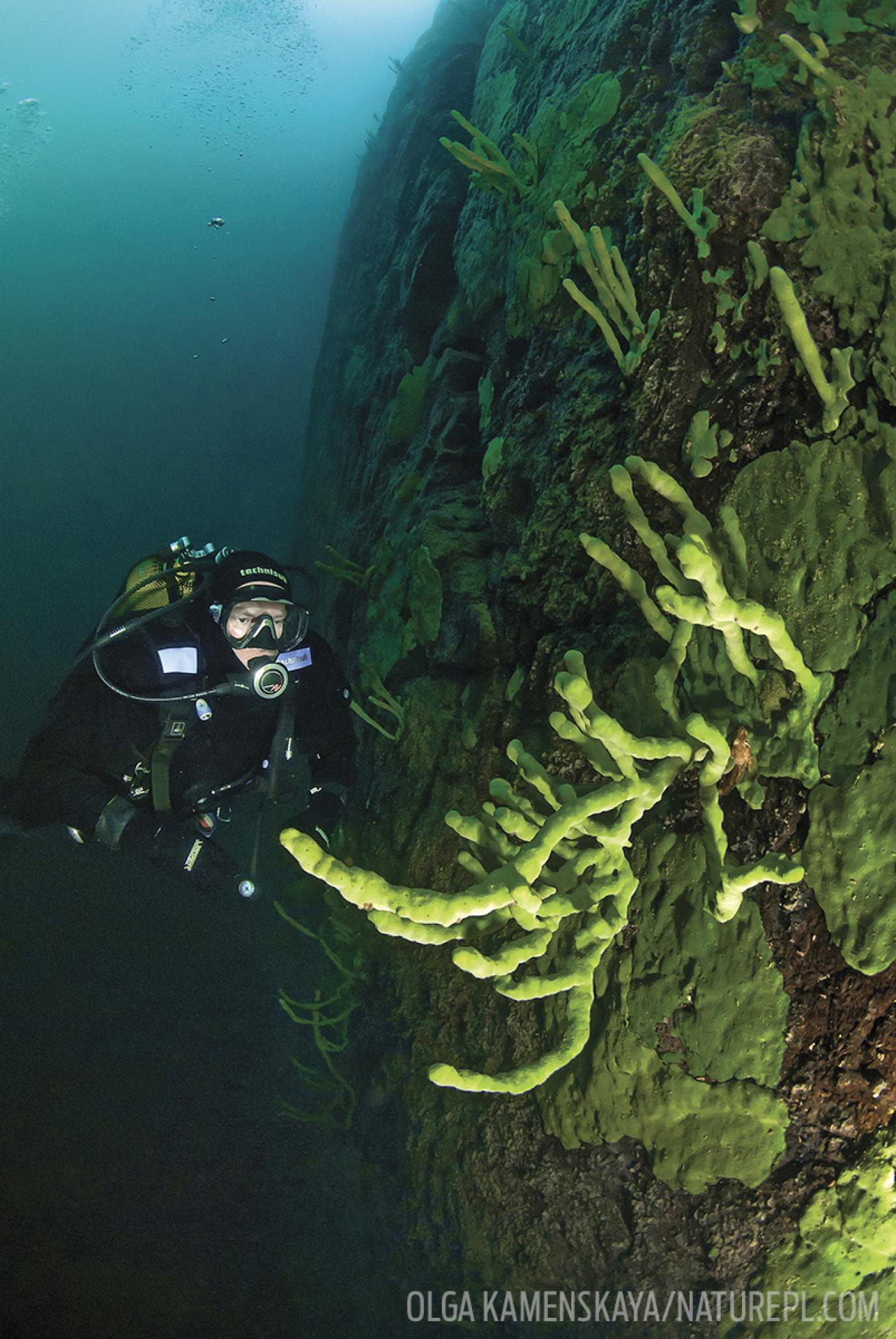
Olga Kamenskaya/Nature Picture LibraryA sheltering bighead sculpin, one of many animals that can only be found in Russia's Lake Baikal, peeks out from a sponge.
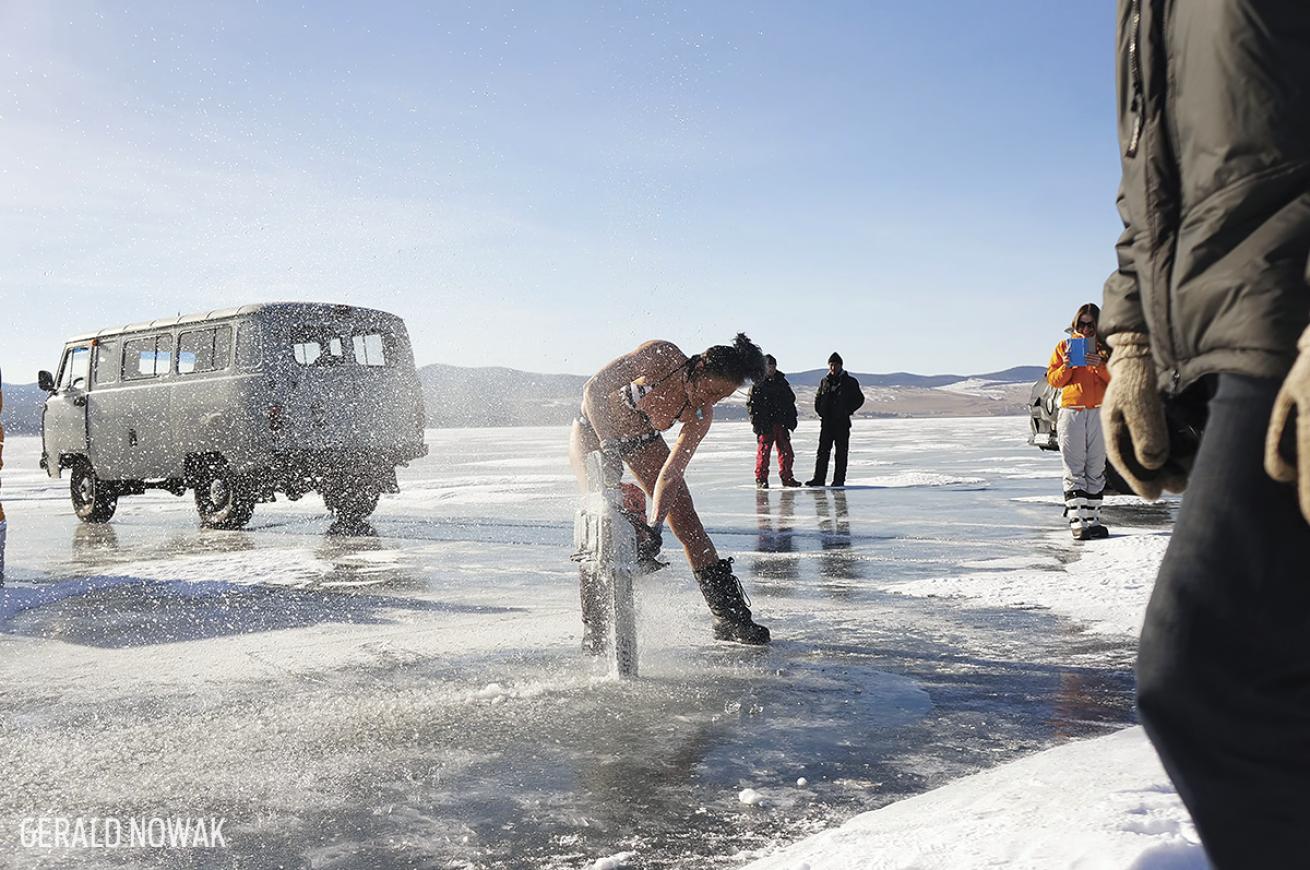
Gerald NowakTatiana Oparina uses a chainsaw to open a hole to scuba dive in Lake Baikal, Russia.
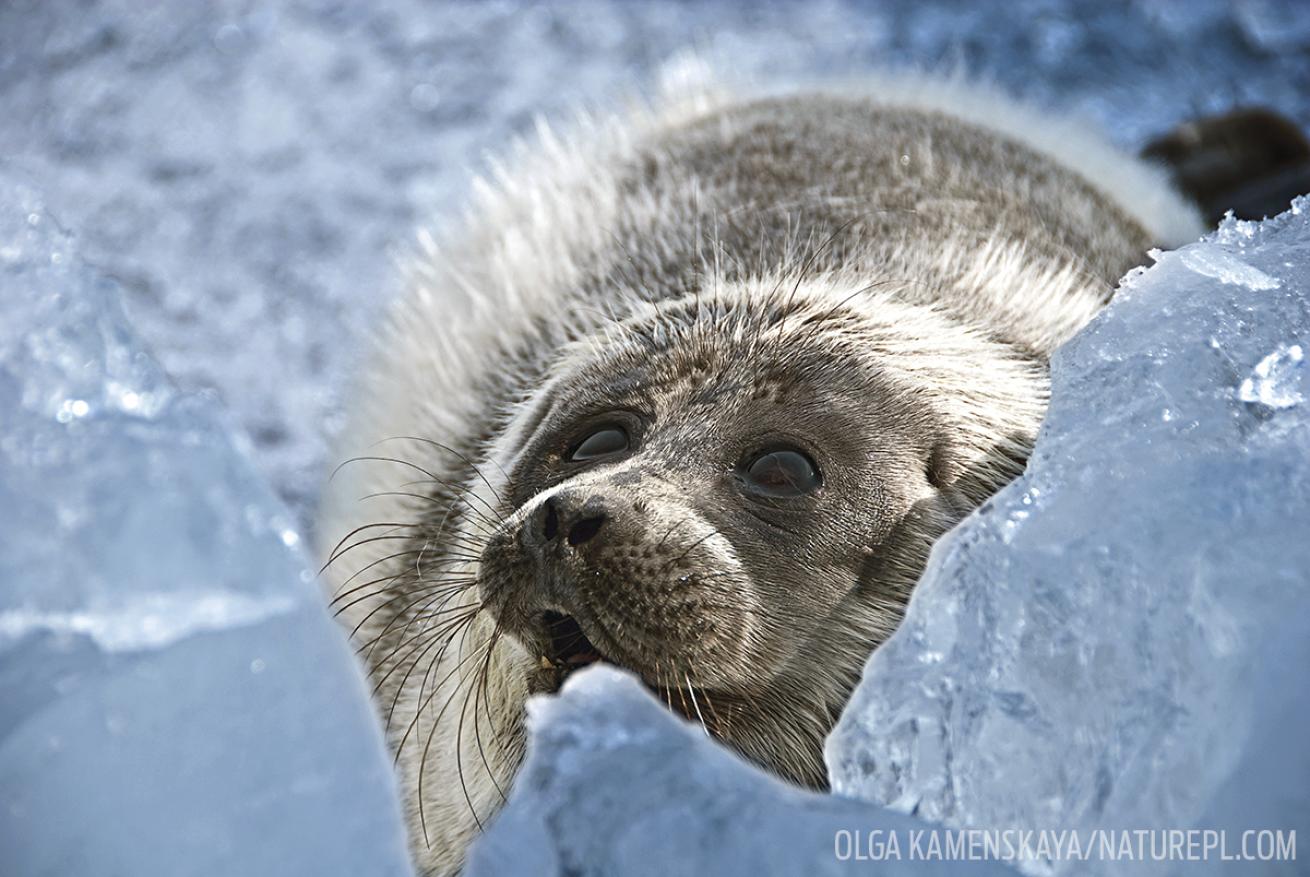
Olga Kamenskaya/Nature Picture LibraryA baby nerpa seal in Lake Baikal, Russia. Nerpa seals are another species that can only be found in this massive lake.
White Sea, Russia
Picture a coral reef under ice and you’ve got winter at the White Sea. Europe’s only sea to freeze annually offers layer upon layer of color: Mustard-yellow kelp beds give way to the reds, oranges and whites of the anemone gardens. Peering through it all are grayish wolffish and translucent-reddish skeleton shrimp.
“You see millions of skeleton shrimp — it’s like a horror movie,” says shooter Gerald Nowak.
Nowak, a longtime diver of frozen lakes, had expected stillness — and quiet — in the frozen seas. Not so. Tides lift and lower the plates of ice, while below, life in all sizes, from gobies to belugas, weaves among the kelp and corals. Says Nowak, “I was so fascinated that I’m no longer interested in warm-water diving.”
See more underwater photos in the White Sea.
Dive Now: January through April is when longer days and warmer temperatures offer the most comfort.
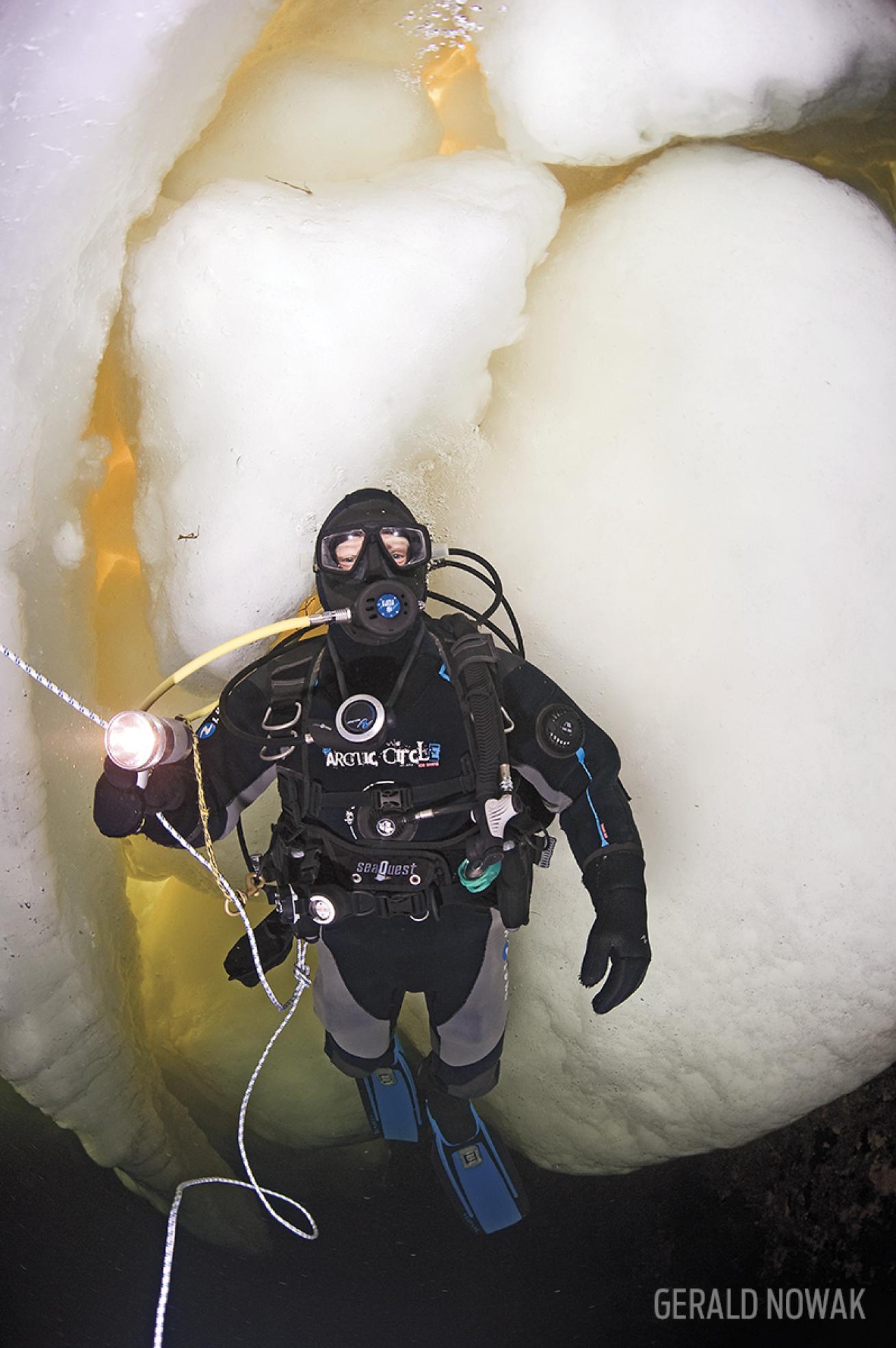
Gerald NowakA diver follows a line beneath the frozen surface of Russia's White Sea.
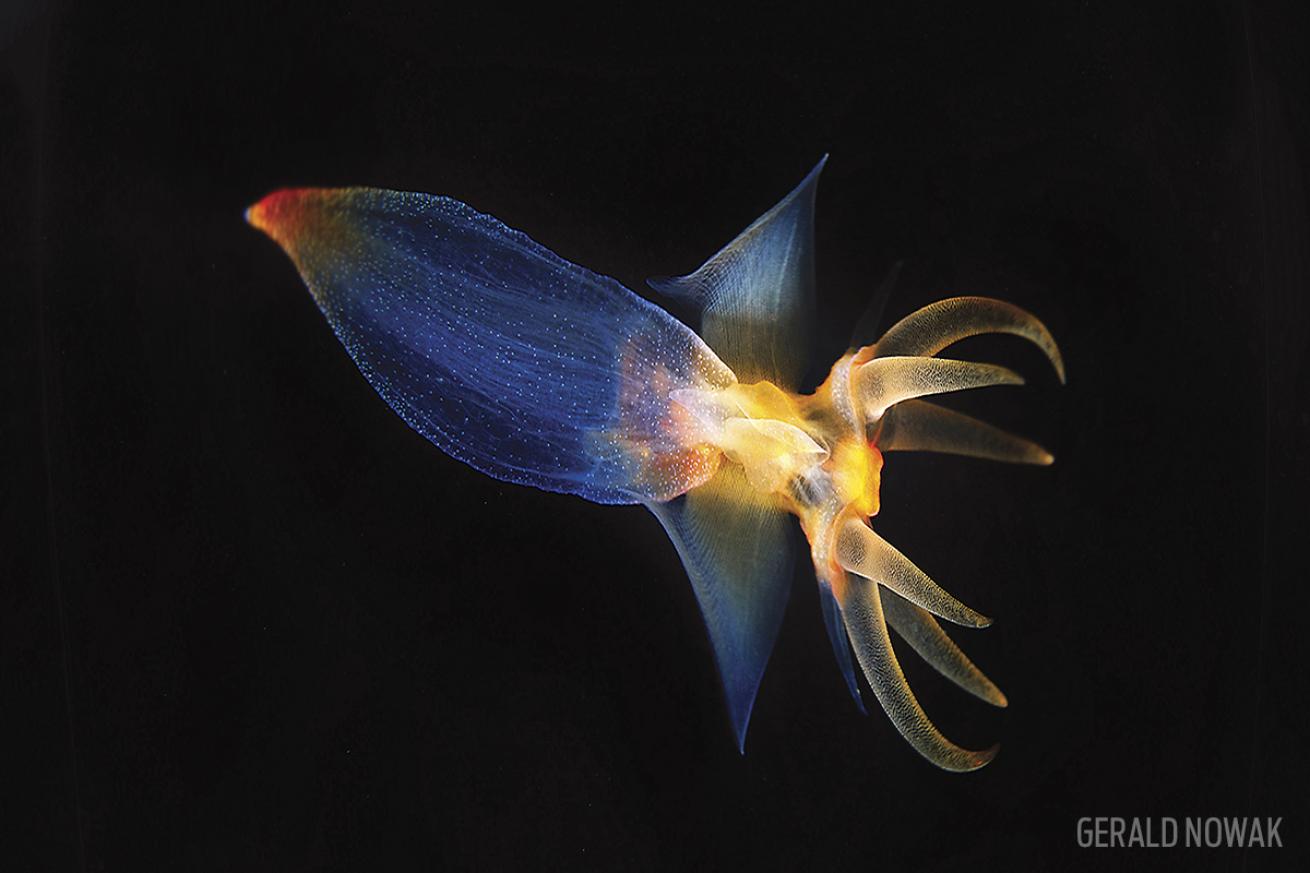
Gerald NowakThe naked sea butterfly is a sea slug that lives in Russia's White Sea.
Lago del Naret, Switzerland
The first week of July, the final 10 miles of the windy pass called Val Sambuco in southern Switzerland’s Alps is open thanks to snowmelt, allowing altitude divers to navigate to the shore of Lago del Naret, the only known freshwater spot in the world containing true icebergs.
Perhaps it’s the rocky shoreline that creates the phenomenon, allowing the lake to heat quickly. Or perhaps it’s the lake’s size and depth, roughly 350 feet, that encourages melting ice to retreat from shore quickly, turning and tumbling into bergs small enough that divers can slip under and peer up at formations haloed in sunbeams.
But this adventure comes with a tight deadline: Two weeks after roads open, the bergs start falling victim to summer, sweating and sinking back into the lake of their curious origin.
Dive Now: Lakebound icebergs might form sooner, but the roads don’t open until the first week of July.
East Greenland
“In a world where everything is mapped, you can’t really explore in too many places, but Greenland is one of them — we discovered new dive sites daily simply by saying, ‘OK, that looks nice,’ and rounding a corner,” says underwater shooter Tobias Friedrich of ice diving with Northern Explorers diving and expeditions, the only local operator touring this region.
Case in point, Friedrich adds, “It’s not a dive center. They just have a compressor and 20 tanks.”
And a small fleet of Zodiacs to bring divers every August and September to whichever stretch of ice entices. Then, the staff ensures safe diving protocol.
“If you hear a crack, look up,” says Friedrich, referring to the unstable nature of breaking bergs, which, like rockslides, could pummel those beneath.
These floating sculptures are nothing if not wildly unstable. Which in part, explains their beauty.
Says Friedrich, “There won’t ever be the same iceberg again, which is part of the magic, that ‘wow’ feeling when you see them.”
Dive Now: Northern Explorers offers Greenland expeditions in August and September only.
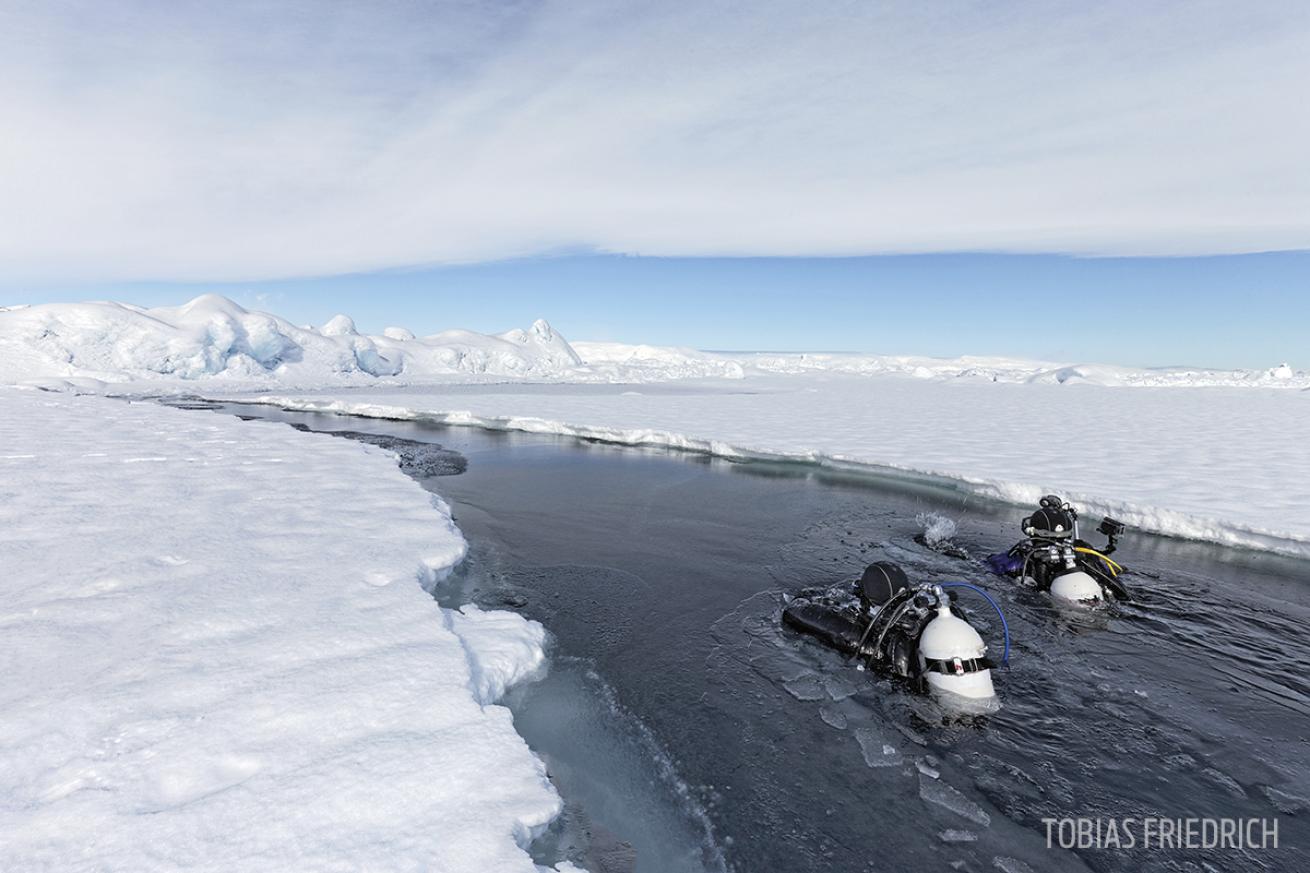
Tobias FriedrichDivers make their way through a crack in East Greenland’s Semalik Fjord, near Tasiilaq.
Antarctica
“Wake up every morning to a crazy new landscape of glaciers and icebergs,” says underwater photographer Keri Wilk of diving the least-visited continent. “Add to that all these unique animals not seen anywhere else.”
He’s not talking about invertebrates — anemones, soft corals and sea squirts, although these carpet the seafloor — but rather, big animals with big personalities. Leopard seals swim circles around divers, blowing bubbles and nosing up in curiosity. Penguins dive-bomb the minus 3 degree F water. Whales are sighted as frequently as snack trays on a liveaboard trip.
“We saw hundreds of whales in total, and probably a dozen species,” says Wilk. “A couple of minke whales were breaching over and over and over again, flying out of the water. That’s not typical behavior of minkes, but then again, the experience of Antarctica is nonstop surreal.”
Dive Now: The South Pole ice-diving season is late January through March.
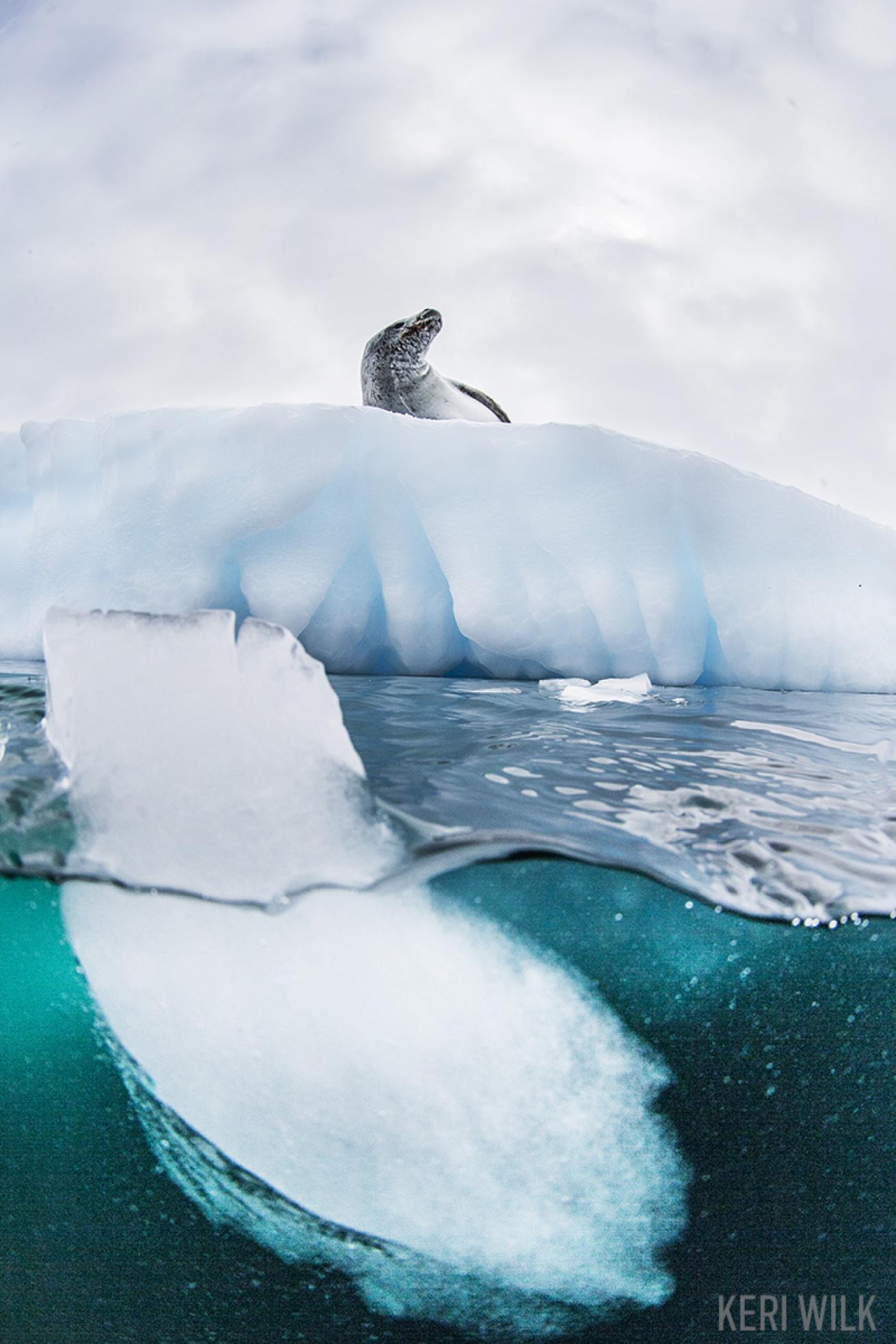
Keri WilkAn Antarctic crabeater seal rests on a free-floating pack of ice in the Antarctic Peninsula.
Hokkaido, Japan
For a hardcore winter expedition with tents staked atop the ice, skip Hokkaido, Japan. The fishing village on the country’s northernmost main island sees an abundance of sea eagles and spotted seals, and a wealth of invertebrates, including Alaskan king crabs the size of truck tires and transparent sea slugs called clione — but it’s not without comforts.
Says underwater photographer Brian Skerry, “You come back at the end of the day and go to geothermal baths, sitting in a naturally heated hot tub, watching the snow coming down after having a great Japanese yakitori meal and sake.”
Granted, you’re not traveling solely for culture. But for reliable ice diving, Hokkaido has it.
Dive Now: Ice diving extends January through March.
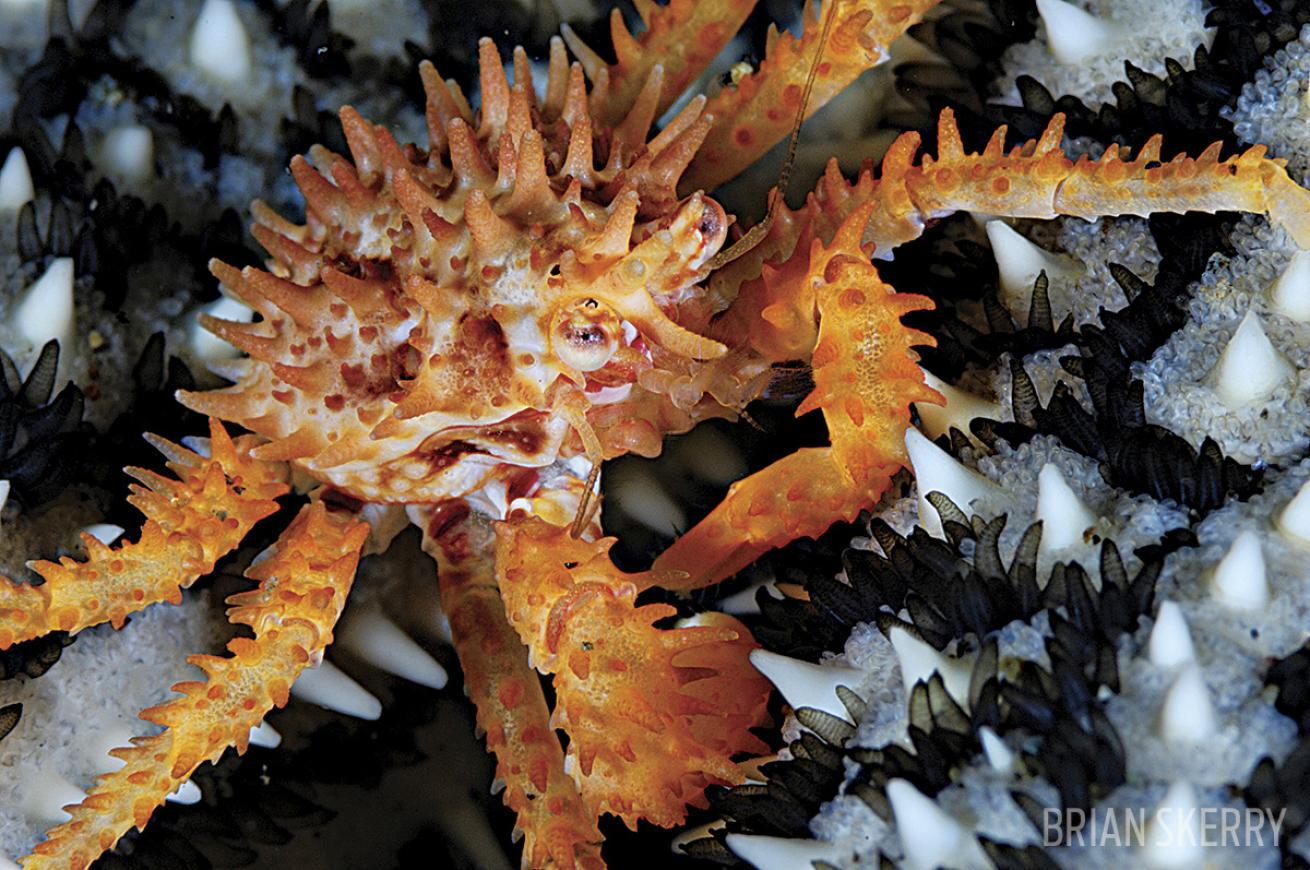
Brian SkerryA baby king crab, about the size if a dime, crawls across a sea star lying on the bottom beneath pack ice in Hokkaido, Japan.




